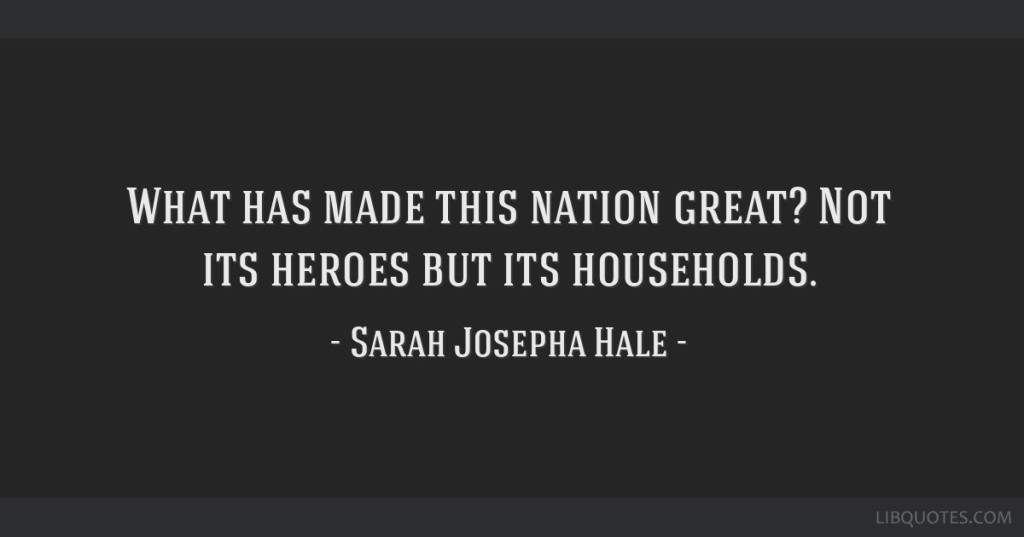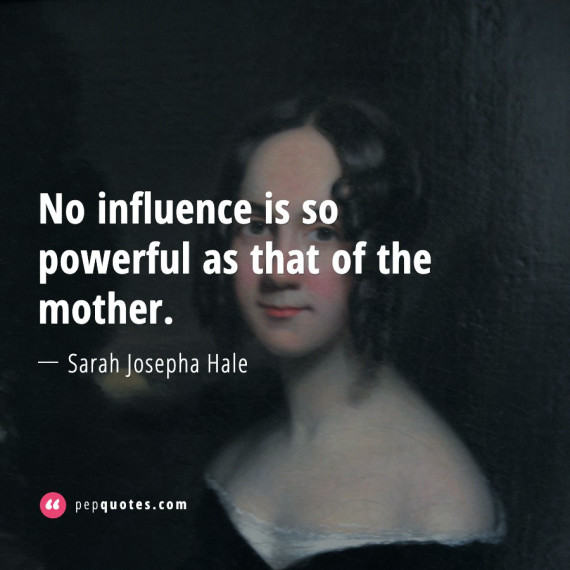Memories of past Thanksgivings swirl my soul and marinate in my mind. When I was young I never thought dressing as Pilgrims and Native Americans was wrong. Learning of all cultures, and the time of celebration together, only grew my respect and appreciation. Although some may consider early learning incorrect (morally, politically, or historically) I am grounded in the belief we are all created equal; nothing will change that. Four hundred years have passed since that first gathering of thanks and praise for an Autumn bounty. How did this day become a permanent place on our calendars? There’s a woman we can thank-and her last name happens to be Hale.
A love story began between a man and a woman-it was 1811. Two years later they wed. Sarah, so beautifully, described she and David’s home life as this:
“We commenced, soon after our marriage, a system of study and reading which we pursued while he lived. The hours allowed were from eight o’clock in the evening till ten; two hours in the twenty-four: how I enjoyed those hours! In all our mental pursuits, it seemed the aim of my husband to enlighten my reason, strengthen my judgment, and give me confidence in my own powers of mind, which he estimated much higher than I. But this approbation which he bestowed on my talents has been of great encouragement to me in attempting the duties that have since become my portion.”
Their next nine years of marriage welcomed five children. Sadly, David died from complications of pneumonia just two weeks before the fifth child was born. Single at 34, with five children, Sarah used the encouragement she had received from her husband to continue her career in writing (she wore black for the remainder of her life).

Sarah Josepha Hale was born on October 24th, 1788, in Newport, New Hampshire. Having a family that believed in education, Sarah was supported in all endeavors. She turned to writing as a form of income when she was widowed. In 1827 her first novel was published in the U.S., Northwood: Life North and South. In London it was titled A New England Tale. (https://en.wikipedia.org/wiki/Sarah_Josepha_Hale, n.d.)
Her book was praised by a pastor that asked Hale to move to Boston to serve as an editor of his journal, Ladies Magazine. As the first female editor of a magazine in the United States, she applied scrupulous standards (https://www.womenhistoryblog.com/2012/04/sarah-josepha-hale.html, n.d.). During this time, she even published an anthology of poems (Poems for Our Children)-included was “Mary Had a Little Lamb” (1830). Originally written from her teaching days which began at age 18 (unheard of at that time) it was titled “Mary’s Lamb.” Later in the 1830’s, Lowell Mason set the nursery rhyme to a melody adding repetition in the verses.
MARY’S LAMB. Mary had a little lamb, Its fleece was white as snow, And everywhere that Mary went The lamb was sure to go ; He followed her to school one day— That was against the rule, It made the children laugh and play, To see a lamb at school. And so the teacher turned him out, But still he lingered near, And waited patiently about, Till Mary did appear ; And then he ran to her, and laid His head upon her arm, As if he said—‘ I’m not afraid— You’ll keep me from all harm.’ What makes the lamb love Mary so ?’ The eager children cry— O, Mary loves the lamb, you know,’ The Teacher did reply ;— And you each gentle animal In confidence may bind, And make them follow at your call, If you are always kind.’ -Sarah Josepha Hale
On a sidenote: In many hours of research and reading for this piece I became intrigued at the controversy surrounding this poem. At 70 years old Mary Tyler (in 1876) claimed she was “Mary” from the poem. She did indeed keep a lamb. Mary remembered a Reverend’s nephew, John Roulstone, writing about the incident of the lamb. The Redstone School where Mary attended now sits in Sudbury, Massachusetts. Without making you travel further down the lamb’s hole with me feel free to research more if you wish! 😊
In 1841 Sarah moved to Philadelphia and made Godey’s Lady’s Book (named after a Philadelphia publisher who bought out her original magazine, combined the two magazines, and hired her as his editor). It’s reported that many feminists scorned her for not being more involved in politics. For four decades she worked to promote educational opportunities for women, just as males. Hale wrote at least seventeen articles and editorials about women’s education. She was awarded a medal in 1860 from the Baltimore Female College. She also used her position to promote American writers. She made major contributions in choosing to publish works by Edgar Allen Poe, Henry Wadsworth Longfellow, and Ralph Waldo Emerson, just to name a few. Morally, she wished for uplifting novels and work. She raised money for various historic sites-helping to preserve George Washington’s home and financially supporting the construction of the Bunker Hill Monument.
Using her persuasive writing skills (and MUCH patience) Sarah spent seventeen years writing to leading U.S. presidents and politicians to push for a national celebration of Thanksgiving. Hundreds of letters went to governors, ministers, and editors as well.
It was 1863. The country was torn in half by war and dissention. A time of Thanksgiving was needed-just as in 1621 when the Plymouth colonists and the Wampanoag shared a meal to celebrate the Autumn harvest. One letter ended up in President Lincoln’s hand. He liked Hale’s idea. On October 3, 1863, he issued a proclamation declaring the last Thursday of November to be National Day of Thanksgiving and Praise. He ordered all government offices in Washington closed on that day. Sarah’s efforts earned her the nickname “Mother of Thanksgiving”. Hale enjoyed many Thanksgiving celebrations after that. She died on April 30, 1879, at the age of 90.
This day of unification was established to ease the stress of the country.
This Thursday, as I sit around the family table with my precious family (and in spirit with all who won’t be seated with us), I’ll be reminded that our freedom wasn’t without a fight of faith. Yes, our freedom from our sacrificial Lamb was given at no cost to us. We don’t have to fight that fight. For a country that seems torn by opposite opinions and acts of aggression, I pray that assaults will cease. Not just on the Day of Thanksgiving and Praise, but every day.
Not long ago a new tradition began on social media. Friendsgiving is a wonderful thing. As thankful as I am for family, I’m grateful for friends too. To those here, in this space, that have supported my writing and beginning a new career-for becoming like family to me-thank you. You are loved.
🤍 May gratitude and grace ground us all.🤍




Have faith💚
Bibliography
(2021.). Retrieved from https://www.womenhistoryblog.com/2012/04/sarah-josepha-hale.html.
(2021). Retrieved from National Women’s History Museum: https://www.womenshistory.org/education-resources/biographies/sarah-hale
(2021). Retrieved from https://www.almanac.com/sarah-josepha-hale-godmother-thanksgiving: https://www.almanac.com/sarah-josepha-hale-godmother-thanksgiving
https://en.wikipedia.org/wiki/Sarah_Josepha_Hale. (2021).





You must be logged in to post a comment.